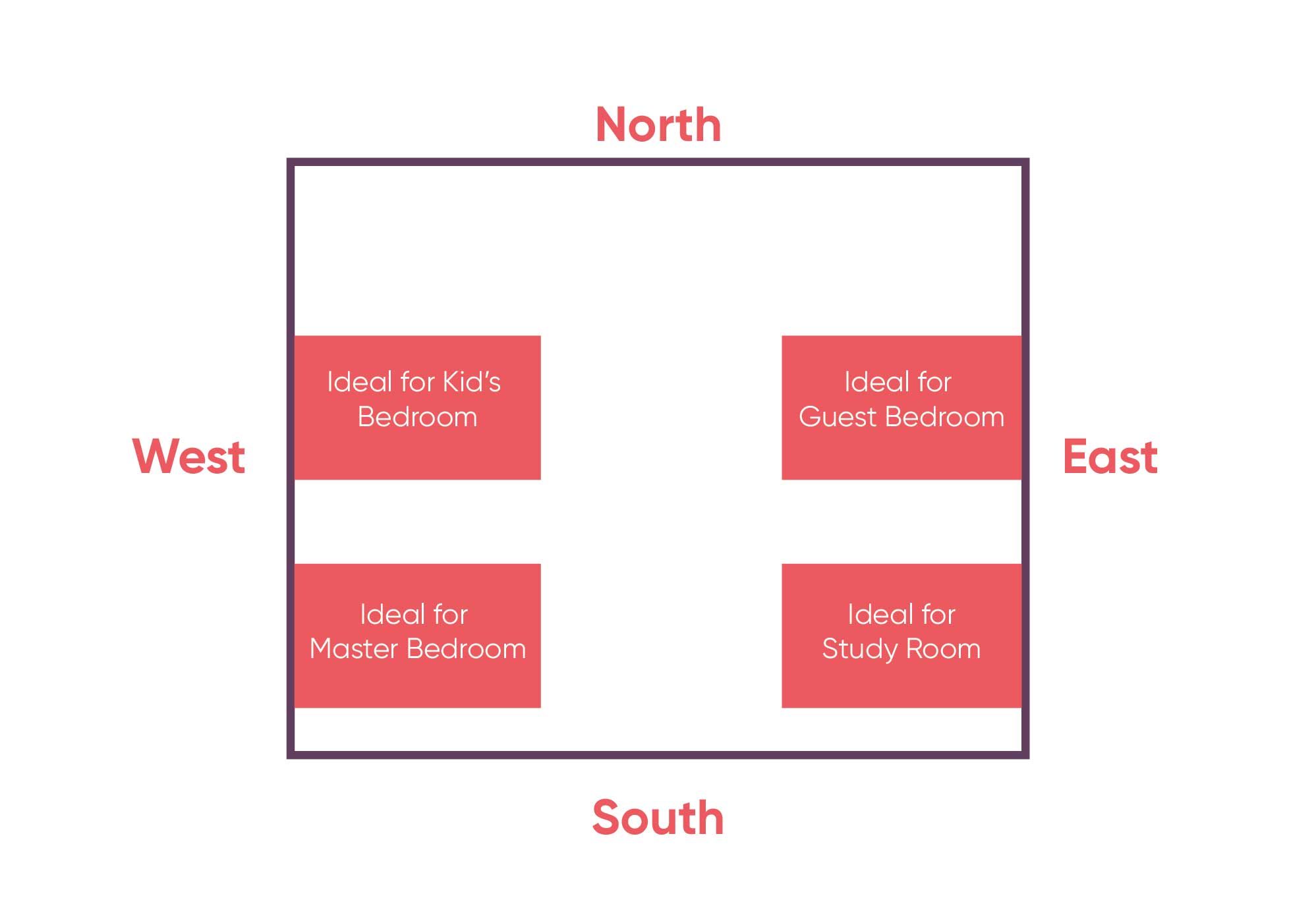Vastu Principles for Bedroom Study Table Placement

In the realm of Vastu Shastra, the ancient Indian science of architecture, the placement of furniture, especially in a bedroom, plays a crucial role in influencing energy flow, concentration, and overall well-being. The study table, a vital element for academic pursuits and intellectual endeavors, requires careful consideration within the bedroom’s Vastu framework.
Ideal Directions for Study Table Placement
The direction of the study table significantly impacts the flow of energy and its influence on the individual. Vastu recommends placing the study table in specific directions for optimal results.
- East: The east direction is considered auspicious for study and learning, as it aligns with the rising sun, symbolizing knowledge and enlightenment. Placing the study table facing east is believed to enhance concentration, improve memory, and foster a positive learning environment.
- North: The north direction, associated with the element of air, is also considered favorable for study. This direction promotes clarity of thought, enhances focus, and encourages a sense of direction and purpose.
- Northeast: The northeast corner is known as the “Ishanya” direction in Vastu, representing the confluence of the east and north energies. This direction is considered highly auspicious for learning and intellectual pursuits. It is believed to enhance creativity, inspire innovation, and facilitate a conducive environment for academic success.
Impact of Study Table Placement on Energy Flow and Concentration
The placement of the study table directly affects the flow of energy within the bedroom, impacting concentration, mental clarity, and overall well-being.
- Positive Energy Flow: Placing the study table in the recommended directions, such as east, north, or northeast, facilitates the flow of positive energy, promoting a calm and focused atmosphere. This energy flow enhances concentration, reduces distractions, and fosters a conducive learning environment.
- Negative Energy Flow: Conversely, placing the study table in unfavorable directions, such as south, west, or southwest, can disrupt the flow of positive energy, leading to distractions, mental fatigue, and difficulty concentrating. These directions are associated with negative energies that can hinder academic progress and create a sense of disharmony.
Optimizing Study Table Placement for Positive Energy Flow
To maximize the positive energy flow and enhance the study environment, consider the following tips:
- Avoid Placement Against Walls: Avoid placing the study table directly against a wall, as it can obstruct the flow of energy and create a sense of confinement.
- Ensure Adequate Space: Leave sufficient space around the study table to allow for free movement and prevent clutter. This promotes a sense of openness and facilitates positive energy flow.
- Use Light Colors: Opt for light colors for the study table and surrounding walls, as they reflect light and create a brighter, more stimulating environment.
- Introduce Natural Light: Maximize natural light by placing the study table near a window. Natural light is believed to enhance concentration, improve mood, and create a positive learning atmosphere.
Factors to Consider When Choosing a Study Table Location: Study Table In Bedroom As Per Vastu

Choosing the right location for your study table in your bedroom is crucial for creating a conducive and productive learning environment. It’s not just about aesthetics; it’s about optimizing the flow of energy and ensuring that the space supports your focus and concentration.
Impact of Location on Study Environment
The location of your study table can significantly impact your study environment. Let’s explore the pros and cons of placing it near the window, door, or bed.
- Near the Window:
- Pros: Natural light is essential for a stimulating and uplifting study environment. It promotes alertness and reduces eye strain. A window also offers a view to the outside, which can be refreshing and help to break monotony.
- Cons: Excessive sunlight can be distracting and create glare on your screen, making it difficult to focus. Additionally, the window may be a source of noise from outside, which can disrupt your concentration.
- Near the Door:
- Pros: Placing your study table near the door allows for easy access and promotes a sense of openness and flow of energy. It also makes it convenient to grab your books or materials quickly.
- Cons: The constant movement and traffic near the door can be distracting and disrupt your concentration. The door may also be a source of noise, particularly if it’s frequently used.
- Near the Bed:
- Pros: The proximity to the bed can be convenient for quick study sessions or last-minute review before bedtime. It also creates a sense of coziness and comfort.
- Cons: The proximity to the bed can make it difficult to maintain a clear distinction between work and relaxation. It may also tempt you to spend more time in bed, hindering productivity.
Influence of Natural Light and Ventilation
Natural light and ventilation are crucial for creating a comfortable and conducive study environment.
- Natural Light:
- Natural light is essential for maintaining a positive mood, reducing stress, and promoting alertness. It also helps to regulate your circadian rhythm, ensuring a healthy sleep-wake cycle.
- Tips: Position your study table near a window that receives ample natural light. Use curtains or blinds to control the amount of light entering the room.
- Ventilation:
- Good ventilation is essential for maintaining a fresh and healthy study environment. It helps to remove stale air and prevent the build-up of carbon dioxide, which can cause headaches and fatigue.
- Tips: Ensure that your bedroom has adequate ventilation by opening windows or using fans.
Creating a Comfortable and Functional Study Space, Study table in bedroom as per vastu
Creating a comfortable and functional study space within your bedroom is crucial for maximizing your productivity.
- Ergonomics: Invest in an ergonomic chair that provides proper support for your back and neck. Choose a study table that is the right height for your posture.
- Organization: Keep your study area organized and clutter-free. Use shelves, drawers, and organizers to keep your books, papers, and supplies in order.
- Personalization: Make your study space your own by adding personal touches like plants, artwork, or inspirational quotes.
Study Table Design and Features for Enhanced Focus

A well-designed study table can significantly enhance your concentration and productivity. By incorporating specific design elements and features, you can create a conducive learning environment that fosters focus and minimizes distractions.
Ergonomic Features for Improved Posture and Reduced Fatigue
Ergonomics plays a crucial role in maintaining good posture and reducing fatigue during long study sessions. The right study table should promote a comfortable and supportive seating position, minimizing strain on your back, neck, and wrists.
- Adjustable Height: An adjustable height study table allows you to customize the table’s height to match your body size and seating position. This ensures proper posture and reduces strain on your back and neck.
- Tilting Tabletop: A tilting tabletop can be adjusted to different angles, providing a comfortable position for reading, writing, or using a laptop. This feature helps to reduce neck strain and promote a more ergonomic posture.
- Comfortable Chair: A comfortable and supportive chair with adjustable features is essential for maintaining good posture and reducing fatigue. Look for chairs with lumbar support, adjustable backrest, and armrests.
- Footrest: A footrest provides support for your feet, promoting better circulation and reducing leg fatigue. It also helps to maintain a balanced posture and reduce pressure on your lower back.
Impact of Color and Lighting on Focus and Motivation
Color and lighting have a significant impact on our mood, energy levels, and ability to focus. Choosing the right color scheme and lighting for your study table can create a conducive environment for concentration and motivation.
- Color: Cool colors like blue, green, and purple are known to promote calmness and focus. These colors can create a relaxing atmosphere conducive to studying.
- Lighting: Natural light is ideal for studying, but it’s not always available. When using artificial lighting, choose a bright white or cool white light that mimics natural daylight. Avoid using warm yellow lights, as they can cause eye strain and fatigue.
Comparison of Study Table Designs and Their Benefits
Different study table designs offer unique benefits that cater to specific needs and preferences. Here’s a comparison of some popular study table designs:
| Study Table Design | Benefits |
|---|---|
| L-Shaped Study Table | Provides ample space for multiple activities, such as studying, writing, and using a computer. Ideal for larger rooms. |
| Corner Study Table | Maximizes space utilization, especially in smaller rooms. Offers a compact and efficient design. |
| Floating Study Table | Creates a minimalist and airy look, perfect for modern and contemporary bedrooms. |
| Standing Study Table | Promotes movement and reduces sedentary behavior. Can be beneficial for health and productivity. |